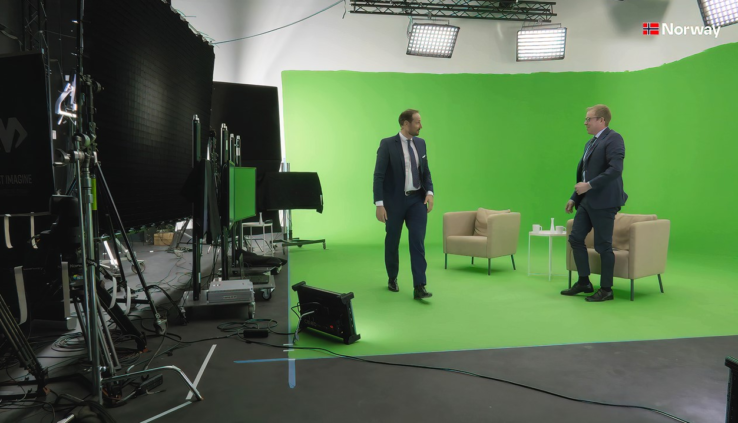How will we Communicate Post Covid? The Ten Lessons we Learned the Last Year
By Adam Noyes
Covid-19 has changed the live streaming and video communications in a major way. Many organizations were thrown head first into streaming, and had to change the way a lot of things were done. So as the world moves back to normalcy, what is the lasting footprint of the pandemic on Live Video?
MediaCityBergen.no recently released a great article detailing ten lessons we’ve learned about streaming, due to the pandemic. Check out some highlights from that article, below.
For most of us, we started from a point pre covid where the majority of events took place physically, with an occasional streaming session on selected happenings. Meetings on Zoom or Teams were indeed part of everyday life before Covid. However, most of our meetings took place in person, and many of us were boarding the red-eye (also known as “the pajamas flight”) between cities to attend meetings on a regular basis. Covid changed all of this.
What we have seen throughout the last year is not only a massive shift in how we communicate, but a substantial amount of innovation and much-needed change in new technology and tools to meet the new normal; A way of life where we desire greener conversations, less travel and find more sustainable ways of bringing people together.
Here are ten things we learned about communication during covid
1) Everybody is a producer now.
No doubt, the fact that everyone became familiar with Teams, Zoom, and other online tools lowered the threshold to host online meetings and organize webinars. It is easy, quick, and in many ways simpler than physical events. One does not have to think about logistics, travel, or serving your audience coffee or food. And there is no tidying up after.
But just because you can, does not mean you have to. We can surely agree that the performance quality, especially in the first weeks and months of Covid, was highly varying and often unpredictable. All events were introduced with a line from Adele: “Hello, can you hear me?”
Many webinars and online seminars were set up because it was feasible and achievable and because the audience was easily accessible. They did not necessarily have quality content. If we have learned anything over the last year, it is that content is king. Still.
Covid, with all the webinars, has not only pushed digital innovation and adoption but made people realize how difficult communication really is.
2) This is innovation. Let’s fail more.
But, there is something democratic and open in the fact that everyone can run their events and reach an audience. And there is a lot of learning. The competence gained from using new tools and solutions (share screen, remember to mute, use waiting rooms, etc.) is highly valuable. And, one might add, much needed.
I personally logged in to a webinar 10 min before start and – much to my surprise – came straight into the meeting just to observe the speaker putting on her makeup, straightening her bra, and doing her zen as part of her preparation. Entertaining, one might add. And we have all seen the YouTube videos of the executives forgetting to turn off their web camera, getting up from their chair, revealing that they – other than a shirt and tie – are in their underwear.
And let’s also take a look in the mirror. My company typically hosts around 90 events every year. They are all moved online now, and like everyone else, we have had a steep learning curve. Let’s just say that the annual bloopers tape for our Christmas party was extra rich this year…
But hey – this is what innovation really is.
3) Shorter attention span
Online audience patience is much, much less than the perseverance we have in a physical meeting. Everything needs to be sharper, shorter, and to the point. Your audience will likely be multitasking as they listen to your webinar. It is so much harder to keep their attention.
Communication must work both ways. It is a two-way road. And easy to forget when one is operating muting, spotlight, screen sharing, and chat rooms all at the same time. The lesson here is to put at least the same amount of energy and attention to your content and message as to your playout.

